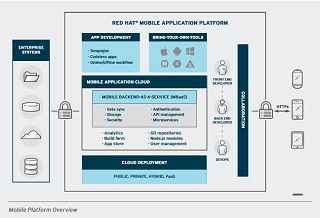The Red Hat Mobile Application Platform helps simplify and accelerate the development, integration, deployment, and management of mobile solutions by allowing collaboration across development teams, such as front-end application developers, back-end IT integration, and DevOps teams.
The Red Hat Mobile Application Platform provides mobile capabilities that include security, reusable connections to back-end systems, and collaborative/agile app development.
Red Hat also announced that Full support for the Red Hat Mobile Application Platform in production environments via OpenShift Enterprise is planned for the coming year.
For further info have a look at Red Hat’s official announcement.







0 Comments